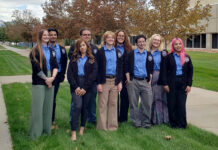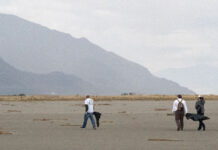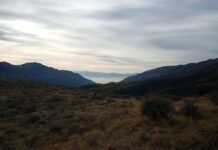
According to numbers released by the DAQ, industry causes 11 percent, area sources cause 32 percent, and transportation causes 57 percent of the air pollution that the Wasatch Front faces each winter. If you believe these numbers touted by mainstream media as accurate, then you have fallen into one of the three types of lies – statistics.
In order to be savvy consumers of media, we need to make sure that we understand what the numbers are actually measuring.
The first thing that the graph measures are PM 2.5, particulate matter found in the air which are smaller than 2.5 micrometers. These small particulates can cause some serious health issues, but they are not the only form of pollution that industry releases. Industry is allowed, by DAQ permit, to dump lead, sulfur dioxide, mercury and several other pollutants into the air that car exhaust no longer contains.
The second thing measured is the categories of industry, area source and transportation. While these may seem like they are easy to define, they apparently are not.
To hear Governor Herbert tell people in Utah they just need to stop driving, and the air pollution problem will go away, is only 57 percent of the problem. However, the category of transportation may include diesels, tractors and giant dump trucks at Kennecott.
“Area sources” are supposed to be homes, buildings and businesses – that are not industrial in nature though there has been a suggestion that Kennecott is referred to as an “area source.”
With five refineries, a medical waste incinerator, and a copper mine responsible for the largest landslide on record, it may be difficult to say what you are breathing in and where it actually comes from.
The point is that while the numbers may not be exactly false, they are misleading. Unless the data comes with facts about what is in each category, what it is measuring and how it was compiled, it has no meaning, or rather, it has the meaning that whoever compiled it wants it to have. It should be the media’s job to find out what is the truth, and what is a lie.
KSL was not the only mainstream media outlet to be duped by this graph just two days before Utah’s largest anti-air pollution rally. And in a perfect America where the press is guaranteed freedom and is referred to as the Fourth Estate, citizens should be able to trust their news sources to dig out the facts instead of accepting spoon-fed press releases by public relation firms hired to put the best face on a problem.
Unfortunately, capitalism destroys the integrity of news. With a lack of resources, the urge to get the scoop and the inability to fill all of the time and pages that media has with good news, consumers get the drivel that they demand with a heaping helping of obfuscation and lazy reporting.
It is so much easier for reporters to report on entertainment, pseudo-celebrities and the personal stories that may or may not be related to a larger problem at hand. If you want better news, you must demand it with your money, your time and your voice.






